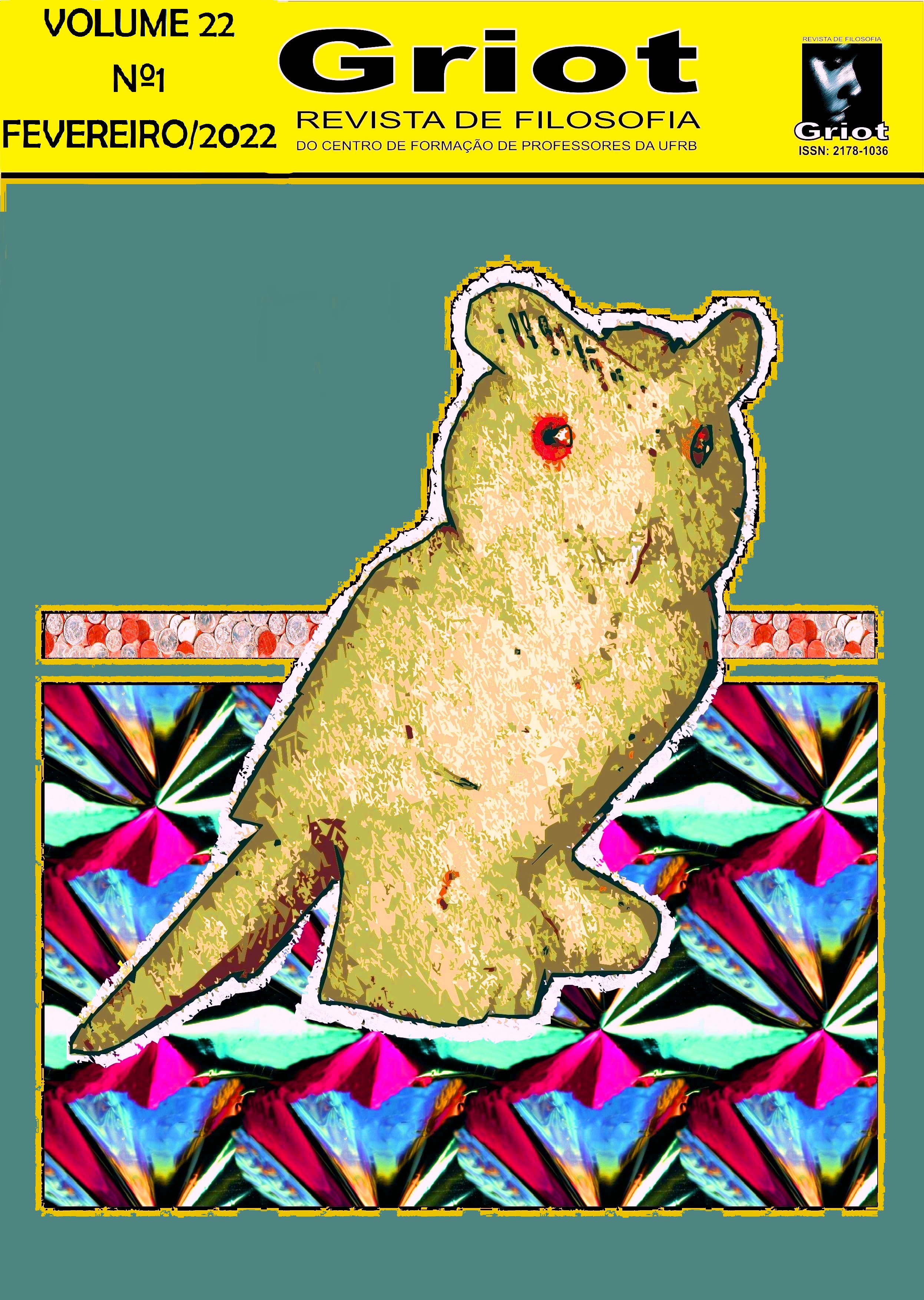The two sides of the limit of critique: why is the noumenon within the transcendental analytic?
DOI:
https://doi.org/10.31977/grirfi.v22i1.2556Keywords:
Transcendental Analytic, noumenon, limit, critiqueAbstract
Starting from our attention to the systematic divisions of the KrV, we address the chapter III of Analytic of principles and its theses on the transgression of reason and the negative expansion. Our proposal is to show the specificity of the concept of noumenon in relation to the other categories of understanding without neglecting its place within Transcendental Analytic. The peculiarity of this concept expresses in a privileged way the relation of critique to the limits of knowledge, since noumenon is a representation that is excluded from the possibility of intuition, but is included in the analysis of knowledge. We therefore intend to shed light on the arguments that, on the one hand, limit knowledge and, on the other hand, allow thought a way to go beyond experience. Thus, in the analysis activity that detaches itself from specific interests in favour of an impartial investigation, the critic’s position can embrace the inside and the outside of the delimitation of knowledge.
Downloads
References
ALLISON, H. Kant’s concept of the transcendental object. In Kant-Studien vol. 59, no. 1-4, Berlin; New York: De Gruyter, 1968 (pp. 165-186)
BUNCH, A. ‘Objective Validity’ and ‘Objective Reality’ in Kant's B-deduction of the Categories. In Kantian Review v.14-2. 2010 pp 67-92.
CACCIOLA. Schopenhauer e a Questão do Dogmatismo. São Paulo, Edusp-Fapesp, 1994.
CAIMI, M. Pensamentos sem conteúdo são vazios. In Analytica vol. 6, 2001 (pp. 177-94).
CODATO, L. Kant e o fim da ontologia. In Analytica 13 (1) (2009). 39-64.
HULSHOF, M. O conceito de númeno na “Dialética transcendental”: a abertura para um uso legítimo das ideias da razão. Studia Kantiana 10 (12) (2012):5-33.
GUYER, P. Kant and the Claims of Knowledge. New York, Cambridge University Press, 1987.
KANT, I. Gesammelte Schriften. Hsrg. Akademie der Wissenschaften. Berlin/Leipzig: W. de Gruyter.
KANT, I.Crítica da razão pura. Trad. M. P. dos Santos & A. F. Morujão. Lisboa: Fund. Calouste Gulbenkian. 2001.
KEINERT, Crítica e autonomia em Kant: a forma legislativa entre determinação e reflexão. São Paulo (tese) USP. 2006.
KEMP SMITH, N. A Commentary to Kant's 'Critique of Pure Reason. Nova York: Palgrave Macmillan, 2003
LEBRUN, G. Kant e o fim da metafísica. Trad. C. A. Ribeiro de Moura. São Paulo: Martins Fontes, 2002.
LEBRUN, G. A aporética da coisa em si. In LEBRUN, G. Sobre Kant. São Paulo: Iluminuras, 2001
LICHT, P. Algumas observações sobre a dialética transcendental: o fim da Crítica da razão pura. In Studia Kantiana, v. 6/7, 2008.
LOUZADO, G. O paradoxo das coisas em si mesmas. In O que nos faz pensar 19 (2005): 149-164.
LONGUENESSE, B. Kant et le pouvoir de juger. Paris: Pr. Universitaires de France, 1993.
MATTOS, FC. Kant e o problema da coisa em si. Perspectiva de uma reflexão racional. In Cadernos de Filosofia Alemã 5, (1999): 27-44.
SANTOS, L.R. dos. Metáforas da razão.... Lisboa: Fund. Calouste Gulbenkian, 1994.
SEEL, G. Die Einleitung in die Analytik der Grundsätze, der Schematismus und die obersten Grundsätze. In MOHR, G; WILLASCHEK, M (hrsg) Immanuel Kant, Kritik der reinen Vernunft. Berlin: Akademi Verlag. 1998. (pp. 217- 246).
SUZUKI, M. O gênio Romântico. São Paulo: Ed. Iluminuras, 1998.
ZÖLLER, G. Possibiliser l’expérience: Kant sur la relation entre le transcendantal et l’empirique. In GRANDJEAN (org) . Kant et les empirimes. Paris: Classiques Garnier, 2017 (pp. 99-112).
Downloads
Published
How to Cite
Issue
Section
License
Copyright (c) 2022 Paulo Santana Júnior Borges

This work is licensed under a Creative Commons Attribution 4.0 International License.
The authors who publish in Griot: Revista de Filosofia maintain the copyright and grant the magazine the right of first publication, with the work simultaneously licensed under the Creative Commons Attribution 4.0 International License, allowing sharing and adaptation, even for commercial purposes, with due recognition of authorship and initial publication in this journal. Read more...









































































